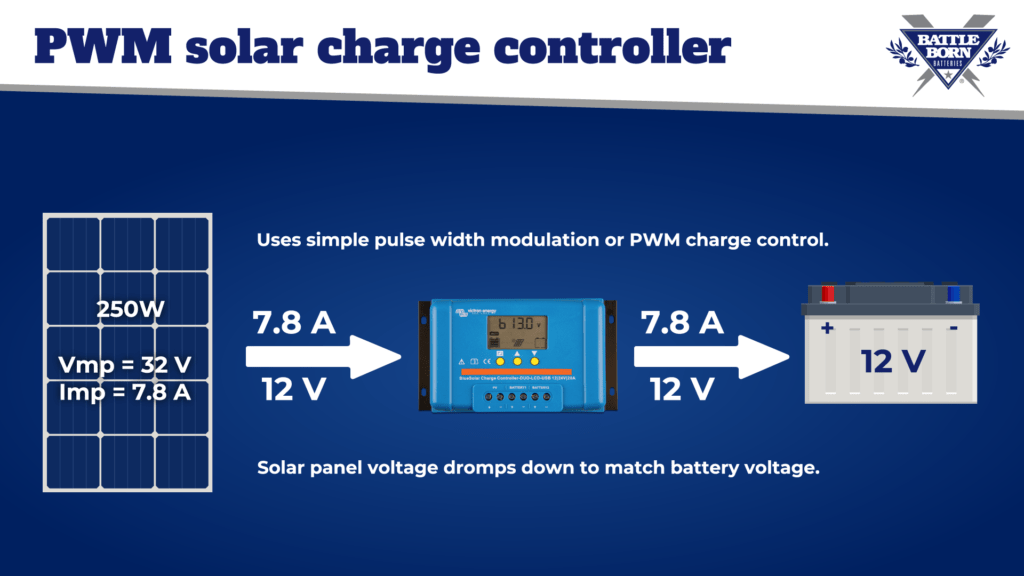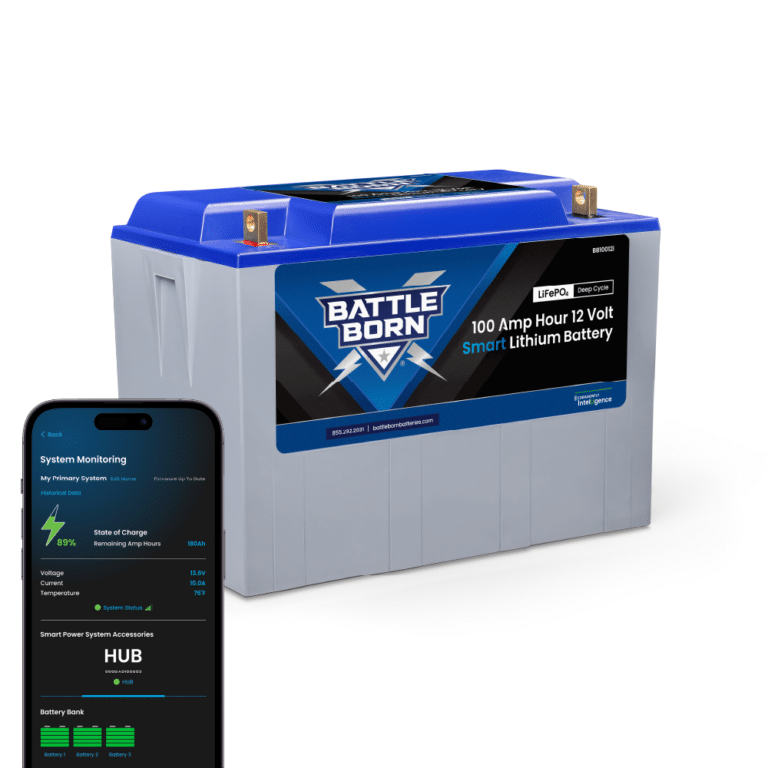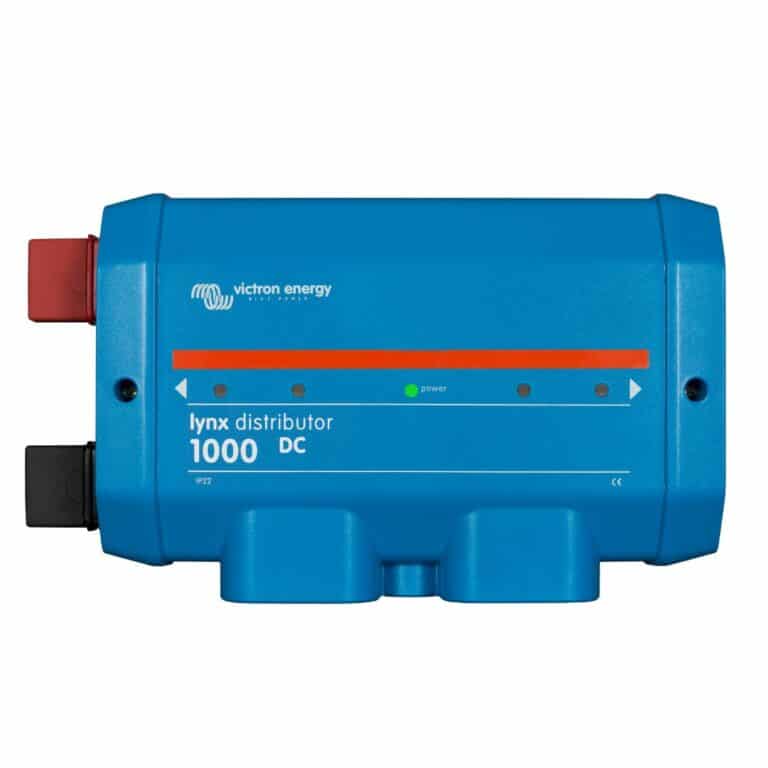
MENUMENU
TALK TO AN EXPERT
Special Hours: 7AM – 6PM PST
TALK TO AN EXPERT
Special Hours: 7AM – 6PM PST
The most basic functionality of a solar power system is solar panels collecting energy from the sun and storing it in batteries so that you can use it whenever you’d like. However, you can’t simply connect your solar panels directly to your batteries and expect them to charge. To get the most out of your solar panels, you’ll need a charge controller to charge your batteries efficiently. The most efficient type of charge controller is the maximum power point tracking or MPPT charge controller.
Let’s take a look at how they work and what benefits they provide.
Before we dive into how MPPT charge controllers work, let’s explain how they get their name.
The voltage at which a solar panel produces the most power is called the maximum power point voltage. The maximum power point voltage varies depending on environmental conditions and the time of day.
MPPT charge controllers get their name because they monitor the solar panel and determine the maximum power point voltage for the current conditions. This function is called maximum power point tracking, or MPPT for short.
Tip: Refresh on Amps, Volts, & Watts and their differences.
Solar panels and batteries have different optimal operating voltages. Not only that, these voltages fluctuate. An MPPT charge controller is a DC-DC converter that maximizes the efficiency of a solar system. It does this by optimizing the voltage match between the solar panel array and the batteries.
For example, depending on the state of charge, a 12-volt battery has a nominal voltage that ranges between just over 10 volts and just under 13 volts. Furthermore, the voltage required to charge a 12-volt battery ranges between 13.5 and 14.5 volts depending on the charging phase.

On the other hand, the optimum output voltage of a solar panel varies depending on the panel’s temperature, time of day, how cloudy it is, and other environmental factors. For instance, under ideal conditions, a 250-watt solar panel may have an optimal operating voltage of 32 volts. As the panel heats up in the sun or on a hot day, the optimal voltage may drop to as low as 26 volts.
The rated panel voltage must be higher than the battery voltage to accommodate for these voltage drops in the panel and the increased required battery charging voltage. Without an MPPT charge controller, this voltage differential leads to a lot of wasted power.
To better understand how this voltage difference causes inefficiencies, let’s first examine the other common type of solar charge controller. This controller is the pulse width modulation (PWM) charge controller.
PWM controllers use a transistor switch that rapidly opens and closes as needed to regulate the charge current going into the battery. Since PWM controllers can’t modulate the voltage, they pull the output voltage of the solar panel down to match the battery voltage. Let’s look at an example.
A 250-watt solar panel may have an optimal or max power voltage (Vmp) of 32 volts and a max power current (Imp) of 7.8 amps. (32 volts x 7.8 amps = 250 watts)
Using a PWM controller, your panel will still produce 7.8 amps. But the voltage will drop to match the battery at 12 volts. Now, your panel is only providing 94 watts instead of 250 watts. (12 volts x 7.8 amps = 94 watts)

As we mentioned before, MPPT charge controllers are DC-DC converters. This means they regulate the charge current into the battery like a PWM controller. But, they also convert the voltage coming out of the panel to match what the battery needs. Let’s look at an example of how this drastically improves efficiency.
Using the same 250-watt panel, the MPPT controller allows the panel to operate at the max power voltage (Vmp). Now the power going into the controller is the full rated 250 watts.
The output from the controller to the battery still needs to match the battery at 12 volts. But the current increases to 20.8 amps allowing you to utilize the full 250 watt potential of your panel. (12 volts x 20.8 amps = 250 watts)

For simplicity, these examples assumed a 100% efficient conversion in the charge controllers. In reality, a small amount of power is lost as heat during the conversion.
On a properly sized solar power system, it’s not uncommon to see up to a 30% increase in efficiency by switching to an MPPT controller. This efficiency increase is even more significant on systems where the solar panel voltage is much higher than the battery voltage, like our example above.

Utilizing an additional 20-30% of power out of your system becomes more advantageous as the size of your system grows. For this reason, MPPT controllers are often best used on large systems and may not be worth it on smaller, simpler setups.
The maximum power point tracking feature of MPPT controllers is a huge benefit in cloudy environments where the max power point of the solar panels will be fluctuating all day.
MPPT charge controllers are more expensive than PWM controllers. The added cost of upgrading your controller may not be worth it on small, basic systems. However, on larger systems or in locations with unstable weather conditions, the increased power and efficiency gained by using an MPPT controller will likely more than makeup for the added cost of the controller.
Nobody likes to waste power. MPPT charge controllers help you get the most out of your solar panels without worrying about changing weather conditions or making sure you perfectly sized your solar panels to your battery voltage.
We know that building or upgrading an electrical system can be overwhelming, so we’re here to help. Our Reno, Nevada-based sales and customer service team is standing by at (855) 292-2831 to take your questions!
Also, join us on Facebook, Instagram, and YouTube to learn more about how lithium battery systems can power your lifestyle, see how others have built their systems, and gain the confidence to get out there and stay out there.
Shop Best Sellers








Ask a technical specialist now at 855.292.2831
Stay in the Know
5 thoughts on “What Is An MPPT Charge Controller?”
Do you have suggested MPPT charge control parameters for running solar panels to your batteries?
Hi Tim! Check out this video for set up instructions! https://battlebornbatteries.com/victron-bluesolar-mppt-10030-50-charge-controller/
I just bought a system from you guys with a mppt 100/50 charge controller. As of now I have a 190 watt panel on the roof but want to add another 190 watt panel in the future. Can I link the new panel to my old panel and just use the one charge controller? If so are there settings to change after I tie the two panels together?
Understanding what an MPPT or PWM solar charge controller does will help you create the most efficient energy system for your motorhome. While MPPT controllers have the edge in battery charging efficiency, it would be unwise to count PWM out of the picture. This technology remains a favorite for small-scale solar system applications because it is more cost-efficient and straightforward to deploy.
Totally worth it for full-timers that rely on solar panels for electricity everyday. We swapped our PWM for MPPT and now our house batteries are fully charged a lot faster in the morning than they used to be.